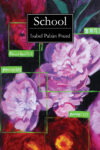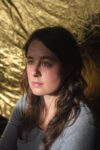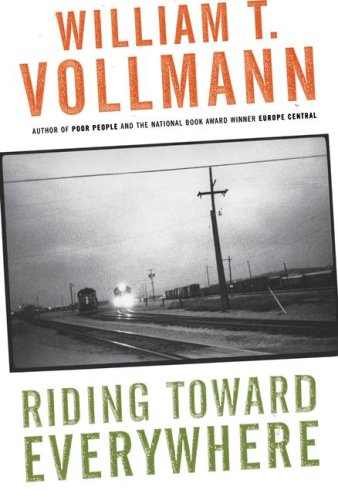 I realize “bullshitting” has negative connotations. People call “bullshit” on a statement or a person. Donald Trump has been termed the Bullshitter in Chief. But when I was young—and when many of the American experimental fiction writers I’ll discuss here were young—bullshitting was often preceded by the word “just” when a group of people, mostly male people, were asked what they were doing while waiting for the fish to bite. “Just bullshitting” was passing time, talking to entertain oneself and others for long stretches of time that couldn’t be used to do anything else, such as riding cross-country in a car without a radio. Bullshitting is telling and retelling anecdotes and stories, maybe even fish stories, joking and bantering with little regard for truth or sincerity or politeness, observing the passing scene, meditating, speculating, asservating, revealing, both sharing and competing for time–preferably with more than one other bullshitter.
I realize “bullshitting” has negative connotations. People call “bullshit” on a statement or a person. Donald Trump has been termed the Bullshitter in Chief. But when I was young—and when many of the American experimental fiction writers I’ll discuss here were young—bullshitting was often preceded by the word “just” when a group of people, mostly male people, were asked what they were doing while waiting for the fish to bite. “Just bullshitting” was passing time, talking to entertain oneself and others for long stretches of time that couldn’t be used to do anything else, such as riding cross-country in a car without a radio. Bullshitting is telling and retelling anecdotes and stories, maybe even fish stories, joking and bantering with little regard for truth or sincerity or politeness, observing the passing scene, meditating, speculating, asservating, revealing, both sharing and competing for time–preferably with more than one other bullshitter.
The best bullshitters are naturally garrulous, and can be digressive to hold the floor even when they may not have much information to communicate. A strong voice, capable of shifts in timbre and tone, is also an asset. As is a certain verbal facility or cleverness, an ability to perform accents and aural idiosyncracies. Bullshitters have to be improvisational, responsive to fellow bullshitters, supplementing the line of conversation or contesting an assertion or taking the discourse in a new direction. Bullshitting is, I’d insist, aware of itself as bullshitting, a genre if you will, an informal language game with parameters if not rules. A participant may say, if another’s tale becomes too tall, “don’t bullshit me,” thus paradoxically using the operative descriptor to restore the discourse to a realm between falsity and fact.
Decades ago there was a popular distinction in American Literature between Palefaces and Redskins. I want to modify that a bit to Artistes and Bullshitters. There is a scholarly book of sociology entitled Street Women and the Art of Bullshitting, but I believe you are reading here the first use of Bullshitting, now capitalized, as a literary term. For experimental novelists of the late twentieth century, the central question was how to get outside the well-oiled, rather simplistic textual machine of realism with its disciplined balances of plot, character, and setting, expressed in a slightly elevated literary language. I believe most people think of experimental or postmodern fiction as the formal or stylistic innovations of the Artistes, novelists influenced by Borges and Nabokov or writers cognizant of French structuralism and post-structuralism. Artistes include Barthelme, Barth, Gass, Hawkes, and DeLillo, all of whom exert considerable control over their fictions. Or someone like the short-fiction writer Lydia Davis whose work is so controlled there is sometimes nothing there. Bartheleme was a consummate parodist, Barth a learned narratologist, Gass a student of Wittgenstein, Hawkes a poet of the unconscious, and DeLillo a transformer of leaden popular genres into literary gold. An extreme example of an Artiste’s text is Walter Abish’s Alphabetical Africa, influenced by Raymond Roussel and written under absolute alphabetical controls.
The Bullshitter line runs from Melville to Twain to Faulkner to Miller, all heavily influenced by colloquial oral discourse. The line continues with Burroughs and Pynchon and the Gaddis of J R. For contemporary Bullshitters, garrulous orality was a way out of the realism machine and a way to distinguish themselves from the Artistes of rigorous control. Burroughs’ Naked Lunch is probably the most extreme example as he throws the voices of the carny barker and drug hustler and 50s hipster within a very loosely organized collection of narratives and monologues. You can hear Burroughs’ hallucinogens and hipsters in many of the numerous digressions in Gravity’s Rainbow, particularly in the last hundred or so pages where Pynchon quotes from Naked Lunch and where, like the rocket, Gravity’s Rainbow appears to lurch out of control. J R is all talk all the time, though actually more fractured dialogue than continual Bullshitting.
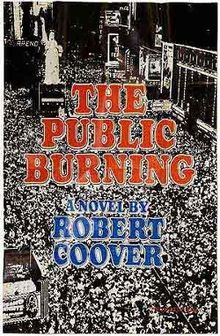 But I want to focus on somewhat more recent and less obvious exemplars of the Bullshitting tradition—Coover, Vollmann, Wallace, and Gayl Jones. And I want to show how Bullshitting sounds in epic novels by these four because the books are like orally composed epics of the past and because I believe these big, wide-ranging books are postmodernism’s best, for the Bullshitters engage more directly and profoundly than the Artistes with significant cultural subjects. Coover’s The Public Burning is a lengthy 1977 novel about the execution of the so-called atomic spies Ethel and Julius Rosenberg. I recommend it highly now because it’s the work of contemporary literature that best understands the Trump phenomenon, its continuity with American history and world pre-history. The Public Burning is also an explicitly Bullshitting work about Bullshitting. The novel is structured as a performance—a giant three-ring circus in which Coover assumes the voices of the high-wire Rosenbergs, the clown Nixon, and the ringmaster Uncle Sam. Coover told an interviewer that he wanted the novel “to seem to have been written by the whole nation through all of its history.” Coover’s superhero Uncle Sam gives this history multiple voices. Coover describes him as an “incorrigible huckster, a sweet-talking con artist.” Sam is a protean shape-shifter, the impure principle of performance and entertainment, an amoral exploiter of American myths and stereotypes. He is also like an archaic pre-literate priest or king, for he uses his bullying bluster to arrange a scapegoat sacrifice in Times Square–in a section of the novel that runs to about 80 pages voicing crazed Americana and religious fanaticism.
But I want to focus on somewhat more recent and less obvious exemplars of the Bullshitting tradition—Coover, Vollmann, Wallace, and Gayl Jones. And I want to show how Bullshitting sounds in epic novels by these four because the books are like orally composed epics of the past and because I believe these big, wide-ranging books are postmodernism’s best, for the Bullshitters engage more directly and profoundly than the Artistes with significant cultural subjects. Coover’s The Public Burning is a lengthy 1977 novel about the execution of the so-called atomic spies Ethel and Julius Rosenberg. I recommend it highly now because it’s the work of contemporary literature that best understands the Trump phenomenon, its continuity with American history and world pre-history. The Public Burning is also an explicitly Bullshitting work about Bullshitting. The novel is structured as a performance—a giant three-ring circus in which Coover assumes the voices of the high-wire Rosenbergs, the clown Nixon, and the ringmaster Uncle Sam. Coover told an interviewer that he wanted the novel “to seem to have been written by the whole nation through all of its history.” Coover’s superhero Uncle Sam gives this history multiple voices. Coover describes him as an “incorrigible huckster, a sweet-talking con artist.” Sam is a protean shape-shifter, the impure principle of performance and entertainment, an amoral exploiter of American myths and stereotypes. He is also like an archaic pre-literate priest or king, for he uses his bullying bluster to arrange a scapegoat sacrifice in Times Square–in a section of the novel that runs to about 80 pages voicing crazed Americana and religious fanaticism.
A character in this section shouts “BEWARE THE MAD ARTIST,” In The Public Burning, as well as in some of Coover’s longer stories about performances, he is the mad Bullshitter, both angry and a little crazed. He praised Stanley Elkin’s fiction for its “bizarrely elaborated routines, extended metaphor, prodigious sales pitches, and show-off shaggy-dogging,” and Coover employs all of these devices, taking wild risks to display both the pleasures and dangers of oral performance, the distinctive voice’s power to entertain and its power to manipulate crowds, its possibilities for sadism and masochism.
In the Times Square section of The Public Burning, Uncle Sam spots “Billy Faulkner” among the gathered celebrities. Uncle Sam asks Faulkner what to do about combating the Phantom, the prince of darkness threatening the American children of light. Faulkner says:
“Let us think fust of savin’ the integer we call home: not whur Ah live, but whur we live: a thousand then tens of thousands of little integers scattered and fixed firmer and more impregnable and more solid than rocks or citadels about the earth, so thet the ruthless and ambitious split-offs of the ancient Dark Spirit shall look and say…`Man–simple, unfrightened, invincible men and women–has beaten us.’”
Then Coover has Sam reply:
“Sweet Genevieve, Bill! That’s pretty highfaluting’ sesquipedalian advice! When I think on this majestic jazz, mine eyes dazzle! And that word `integer’ was a jimdandy, too! Let’s give him a hand, folks, he’s a good ole boy! And pass him a bottle a redeye! That’s right, on the house, nothin’ too good for an old Massassip screamer—that boy can head-rassle with the worst of `em! All them little integers swarmin’ around—WHOOPEE1 you gotta be born and reared up in the swamps to think `em up like that!”
Sam’s colloquial diction, pronunciation, fake enthusiasm, sound effects, and second-person appeal to his listeners deflate the high orotund orality of the Nobel Faulkner. Sam’s passage is an extravagant example of American Bullshitting, both satirizing and satirized. Sam’s style is not an example most other novelists dared to follow, and yet in this passage and elsewhere Uncle Sam represents the tendency of future American Bullshitters to use the lower registers of vernacular style as a way to escape the polished niceties of realism–and as a way to “head-rassle” readers.
William Vollmann is also a “head-wrassler.” In his book about sharing trains with hobos, Riding Toward Everywhere, he mentions his father’s favorite saying, which also appeals to the son: “Bullshit Baffles Brains.” For experimental novelists, baffling brains involved formal, as well as stylistic, dissonances. Posing as Bullshitters, Vollmann, and others were, like Pynchon—and Homer long before him–free to digress and expatiate, to open up the form of their books to odd catalogues of information and strange inventions that might be true, historical arcana and pop trivia, science and fantasy, all of which suggested plural realities, competing and complicating versions like the three simultaneous rings of a circus. In Europe Central, which won the National Book Award in 2005, Vollmann conceives of his book of linked stories as a telephone switchboard where the author purports to overhear the voices of numerous historical characters in the Second World War. This is orality as multiplicity and authenticity. But with an element of ironic self-consciousness, for presiding over the scores of “recorded” conversations is the novelist as amateur historian and, because amateur, a Bullshitter. Vollmann has for much of his career been obsessed with history, with creating alternative narratives to received history while at the same time suggesting that his researched inventions are ultimately exercises in elaborate Bullshitting. In one of his notes in Europe Central, Vollmann says that he “substantially retranslated” a German passage “to avoid paying permission fees.” In another note, he admits that a passage is “the flimsiest speculation, which is God’s gift to historical fictioneers”—and to Bullshitters.
If you have read even half of Wallace’s Infinite Jest, you know that much of this 1996 novel is taken up by textual representation of oral performances in Alcoholics Anonymous meetings, by fulsome passages of dialogue, and by lengthy associative riffs in the voices of its many minor characters. The addicts’ raw narratives wind and rewind, digress and regress as they try to express—or avoid—the truth of their situations. Wallace’s hero, Don Gately, has a “keen bullshit antenna,” but he listens with empathy to the struggling, inarticulate speakers—and thus becomes a stand-in for his creator who appears as a wraith to Gately. The wraith defends his “aural chaos” as “real life’s real egalitarian babble of figurantless crowds, of the animate world’s real agora, the babble of crowds every member of which was the central and articulate protagonist of his own entertainment.” The wraith calls this “babble” of voices “radical realism.”
If Coover opened up his novels to popular culture and anthropology, and Vollmann opened up his books to history, Wallace uses the loose, slip-sliding oral mode of Bullshitting to allow in ugly physiological and raw psychological materials with the apparent motive of serving others, those whose sometimes bullshitting voices are not usually heard in books. Coover’s and Vollmann’s fictions are historical. Because Infinite Jest is futuristic, it also serves others—readers–as a warning about overly seductive entertainment, particularly visual entertainment.
In the passage from Infinite Jest that follows, one can hear how the dialogue that I’ve quoted from The Public Burning and the self-consciousness of Vollmann ooze into Wallace’s third-person narration:
“Lenz reguiles Bruce Green about certain real-estate cults in S. Cal. and the West Coast. Of Delawarreans that still believed Virtual-Reality pornography even though it’d been found to cause bleeding from the eye-corners and real-world permanent impotence was still the key to shrangi-la and believed some sort of perfect piece of digito-holographic porn was circulating somewhere in the form of a bootleg Write-Protect-notched software diskette and devoted their cultic lives to snuffling around trying to get hold of the virtual kamasupra diskette and getting together in dim Wilmington-area venues and talking very obliquely about rumors of where and just what the software was and how their snufflings of it were going, and watching Virtual fuckfilms and mopping the corner of their eyes, etc. Or of something called Stelliform Cultism that Brucc Green isn’t even near ready to hear about, Lenz opines. Or like e.g. of a suicidal Nuck cult of Nucks that worshipped a form of Russian Roulette that involved jumping in front of trains and seeing which Nuck could come the closest to the train’s front without getting demapped.”
Perhaps because Lenz is a drug dealer and drug user, his sentences run on with little seeming control as he reports what appear to be paranoid rumors and tall tales–that are actually somewhat garbled elements of the novel in which he speaks. After letting Lenz go on at shaggy length, committing fragments and solecisms along the way, Wallace comments on Lenz’s bullshitting voice:
“What sounds like Lenz chewing gum is really Lenz trying to talk and grind his teeth together at the same time. “
The comment undercuts Lenz, but his grinding teeth may represent the ambivalence of all novelistic Bullshitters who want to talk—to communicate—but abandon conventional literary language to sound like they are chewing gum, to sound more like the people they write about. You might think of the Bullshitters’ rhetoric as a modified call and response technique, “calling” to readers with oral vividness, hoping to elicit a more visceral “response” than the conventional literary expression of realism or the language games of the Artistes might produce.
These three novels are about monsters—a sexual predator Uncle Sam, the several monsters of Nazi Germany and Soviet Russia, the physically and psychologically misshapen people in Infinite Jest. The works themselves are imitative forms, over-sized monstrosities like doctor Frankenstein’s deformed creation, patched and stitched together from the voices of high and low culture, past and future. Bullshitting fiction can seem excessive, but I’d argue that what appears to be extra is necessary to convey a sense of representational plenitude or what students of epics call “copiousness.” Another rationale for lengthy Bullshitting is Bertholt Brecht’s theory of “alienation effects.” By giving readers more than they thought they wanted, Bullshitters make it difficult for readers to identify too closely with characters or plots. Readers are thus encouraged to think about the social, economic, and political contexts from which the characters and stories emerge. Bullshitting authors might also say that their Bullshitting self-awareness or self-mockery is an act of humility, a confession that, for all the authors’ desire for an enlarged and robust “radical realism” of human voices, the books are fictions. In this, the Bullshitters would agree with the Artistes, who use more refined or high-toned literary devices to “baffle brains”–to deconstruct the fake transparency of realistic fiction.
Wallace extends the Bullshitters’ self-awareness a step further in his equally oral-influenced Interviews with Hideous Men where he warns against the kind of aural exploitation that Coover presented, a “sham-honesty that’s designed to get you to like…another manipulative pseudopomo Bullshit Artist.” I think the Bullshitters are not “pseudopomo” but the most important postmodern experimentalists, for it’s they who, in their seemingly unsystematic ways, bring into their novels dense, often original information about historical, scientific, economic, and political systems—the reason I’ve elsewhere called some of them “systems novelists.” Like Gravity’s Rainbow, the books I’ve discussed have a global perspective on politics and the influences of technology. The Bullshitters are not writing what DeLillo scorned as “around the house and in the garden” fiction. Although playful, Bullshitters are fundamentally earnest. I think of them as old epic poets, writers who sum up their culture in voices. Re-read The Iliad and The Odyssey some day and note how much of the texts is recording of speech and story-telling. And I think of the Bullshitters as new sophisticated naturalists who use the more natural—oral–way of telling stories to address large cultural issues as Frank Norris, Theodore Dreiser, and John Steinbeck did many decades ago.
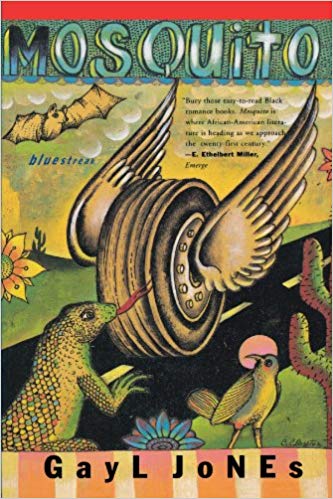 Gaining a critical reputation by Bullshitting at great length seems to be mostly a white man’s game and could be called mansplaining. I once asked Alice Walker why more women didn’t write like Pynchon. She replied, “Why would they want to?” Morrison, for example, is much influenced by oral modes, but I don’t think of her as a Bullshitter. One woman who has taken the Bullshitter aesthetic—or anti-aesthetic—further than any of the men is the African-American Gayl Jones in her 1999 novel Mosquito. It’s a 600-page book that I admit sometimes exceeds—in the banality of its diction and repetitiveness–even my enthusiasm for Bullshitting. Henry Louis Gates reviewed Mosquito and found it “sprawling and formless,” even “maddening.” He said Mosquito sounds as though Jones, who published a critical book entitled Liberating Voices, “wanted to deliver a dissertation about orality in literature by transcribing hours of tapes from a loquacious storyteller.” Here is a simple of what we hear from Jones’s confabulating, jonesing narrator: “I be wondering if it be possible to tell a true jazz story, where the peoples that listens can just enter the story and start telling it and adding things wherever they wants. The story would provide the jazz foundation, the subject, but they be improvising around that subject or them subjects and be composing they own jazz story.”
Gaining a critical reputation by Bullshitting at great length seems to be mostly a white man’s game and could be called mansplaining. I once asked Alice Walker why more women didn’t write like Pynchon. She replied, “Why would they want to?” Morrison, for example, is much influenced by oral modes, but I don’t think of her as a Bullshitter. One woman who has taken the Bullshitter aesthetic—or anti-aesthetic—further than any of the men is the African-American Gayl Jones in her 1999 novel Mosquito. It’s a 600-page book that I admit sometimes exceeds—in the banality of its diction and repetitiveness–even my enthusiasm for Bullshitting. Henry Louis Gates reviewed Mosquito and found it “sprawling and formless,” even “maddening.” He said Mosquito sounds as though Jones, who published a critical book entitled Liberating Voices, “wanted to deliver a dissertation about orality in literature by transcribing hours of tapes from a loquacious storyteller.” Here is a simple of what we hear from Jones’s confabulating, jonesing narrator: “I be wondering if it be possible to tell a true jazz story, where the peoples that listens can just enter the story and start telling it and adding things wherever they wants. The story would provide the jazz foundation, the subject, but they be improvising around that subject or them subjects and be composing they own jazz story.”
The foundational story in Mosquito is about the confused life of Nadine Johnson, a lightly educated truck driver, part-time resident of a Southwest border cantina, and possible participant in a plot to bring Latin American immigrants into the United States. In addition, Nadine is a would-be writer and a friend of a writer Jones invented in another novel. Nadine includes in her rambling narration a play written by Jones’s mother, the most obvious evidence that the novel’s Bullshitting is sometimes authorial indulgence rather than a method to defamiliarize disparate cultural materials. But Mosquito does bring, intentionally I think, the materials of the traditional British novel—marriage and money—to the largely male tradition (discounting Stein) of Bullshitting. In its triviality, humor, and exact attention to dialect voices, Mosquito may even be closer to non-literary bullshitting than the other novels. But it may well be a limit case of the Bullshitting method.
This essay is in praise of Bullshitting, but it’s also a lament because Bullshitting seems to have mostly disappeared from more recent American fiction or, maybe more precisely, from large culture-grasping novels like the four I’ve discussed. To show what has been lost, I want to contrast four 21st-century Big Books—Mark Danielewski’s House of Leaves, Karen Tei Yamashita’s I Hotel, Joshua Cohen’s Book of Numbers, and Richard Powers’ The Overstory—with my four epic Bullshitting novels. I have great respect for these recent novels—their range and social engagement and formal ingenuity—and yet I miss in them the vividness of voice that gives uncommon vitality to the work of Bullshitters. I won’t discuss the newer books in as much detail as I’ve given the Bullshitting novels, but I’ve reviewed all of the more recent novels and you can find my remarks by Googling the titles and my name.
Bullshitting books are written to a significant extent for the ear. What I’ll call Visualizing novels are written primarily for the eye. House of Leaves and I Hotel are extreme examples because of their experiments with footnotes, facsimiles, typography, different page designs, and photographs. Characters do speak, and Yamashita captures various dialects in multi-cultural San Francisco, but the texts are essentially giant repositories of information that seem influenced by the texts and visuals of the Internet. Cohen’s Book of Numbers takes as its subjects the invention of an Internet search engine and its effects. Like Danielewski and Yamashita, Cohen includes multiple narrations, but the most distinctive stylistic feature of Book of Numbers is technical jargon that no bullshitter would utter aloud outside Silicon Valley. Cohen’s novel is a book of some number and many words but few voices. In The Overstory Powers has nine points of view but uses limited omniscience in each. His characters, including a virtual reality inventor, have distinctive consciousnesses, but their voices are heard only in dialogue. And unlike Bullshitting novels, The Overstory is rigorously plotted, linked, and controlled, overseen by the author to make a unified argument against deforestation. Each of these four long novels will probably feel excessive to readers of the traditional 250-page realistic work, but the excess is of textual information—of documents–rather than oral performance. As I’ve stated and implied, the recent novels are like computers, information storage machines of great complexity and subtlety but without an earphone jack.
Obviously, all eight novels are written; none has, like Ursula Le Guin’s Always Coming Home, a tape of music and voices included with the text. I think all of the authors are aware of the parlous state of reading and go to great lengths to “save” the novel as an influential form. In a way, the salvational strategies of both Visualizers and Bullshitters are retrograde. The Visualizers are not retrograde like, for example, Jonathan Franzen and his comfort-food fiction, but they do essentially accept Stendhal’s ocular metaphor of the realistic novel as a mirror going down the roadway, even if that roadway is the long and wide information highway. The Visualizers enlarge the mirror, sometimes make it into one of those triple mirrors still found in some clothing stores. The Bullshitters are even more retrograde, recalling epic oral performance when the maker and the audience occupied the same intimate space. Bullshitting attempts to save the novel by adding sound to a book’s visuals. Maybe the Visualizing novels are like nineteenth-century landscape paintings, and the Bullshitting novels like plays or movies. I suppose I should say one style is not superior to the other, but what is lost as high-ambition Bullshitting disappears is not just representational exactitude of characters’ speech but the egalitarianism of what Wallace called “radical realism.” The Bullshitting novel seems to me a democratic form, honoring one Greek root of that word: demos, the people, those who spoke in the ancient agora. Perhaps even more importantly, the ascendance of Visualizing sacrifices a certain kind of pleasure–word to word, sentence to sentence pleasure in the sound of full-voiced prose, its music. In an age when it’s a cliché to say that few have the time or concentration for long novels, perhaps Bullshitters of the future could save the extended form with aural pleasures. The novels of Visualizers require attention to their length, their global scale, to demonstrate their value. The Bullshitters give value locally–page to page—and globally. They honor an ancient definition of art, Horace’s delight and instruct; Bullshitting novels entertain while instructively critiquing entertainment. They combine the sounds of low and high, exemplified by the limericks and quotations from Rilke in Gravity’s Rainbow. Literal bullshitters seem to be effortless. Literary Bullshitting takes a lot of work to get the sounds right, maybe another reason why this art wanes.
No novelist insisted more on writing for the ear than William Gass. An eminent Artiste in his high-modern models and formal elegance, Gass was far from being a Bullshitter. But his final novel—Middle C, published in 2013—is an excellent example of both aural and visual orientation, an example that makes the reader think about the differences between them. Narrated by a failed musician and mostly incompetent music professor, the novel has the full catalogue of sound devices consistently displayed in Gass’s earlier fictions and criticism. But in its later stages, Middle C becomes, like the fiction of the Visualizers, an archive of information as the professor puts together an “Inhumanity Museum,” a record of barbarous acts that are articulated in more transparent and functional diction than the rest of his story. The personal resentments that generate the stylistic vitality of the professor’s early narration give way to historical catastrophes that cannot be aestheticized by poetic means. The massive information of the Museum does not cancel the professor’s voice, for it is, after all, the voice that reports the Museum, but what we have—in a way—is an internal conflict between voiced text and written text, between the musical reference of “middle C” and other meanings of the phrase, including middle class, that gather around the musical reference. For those readers who find the Bullshitters too aural and improvisational, and for those who find the Visualizers too influenced by the hyperlinked data dump, Gass’s novel is a work that has both orientations–and is thoughtfully about both. For such a work, this coiner of terms has no name except Middle C.
Tom LeClair is the author of three critical books, six novels, and hundreds of reviews and essays in national periodicals.
This post may contain affiliate links.





